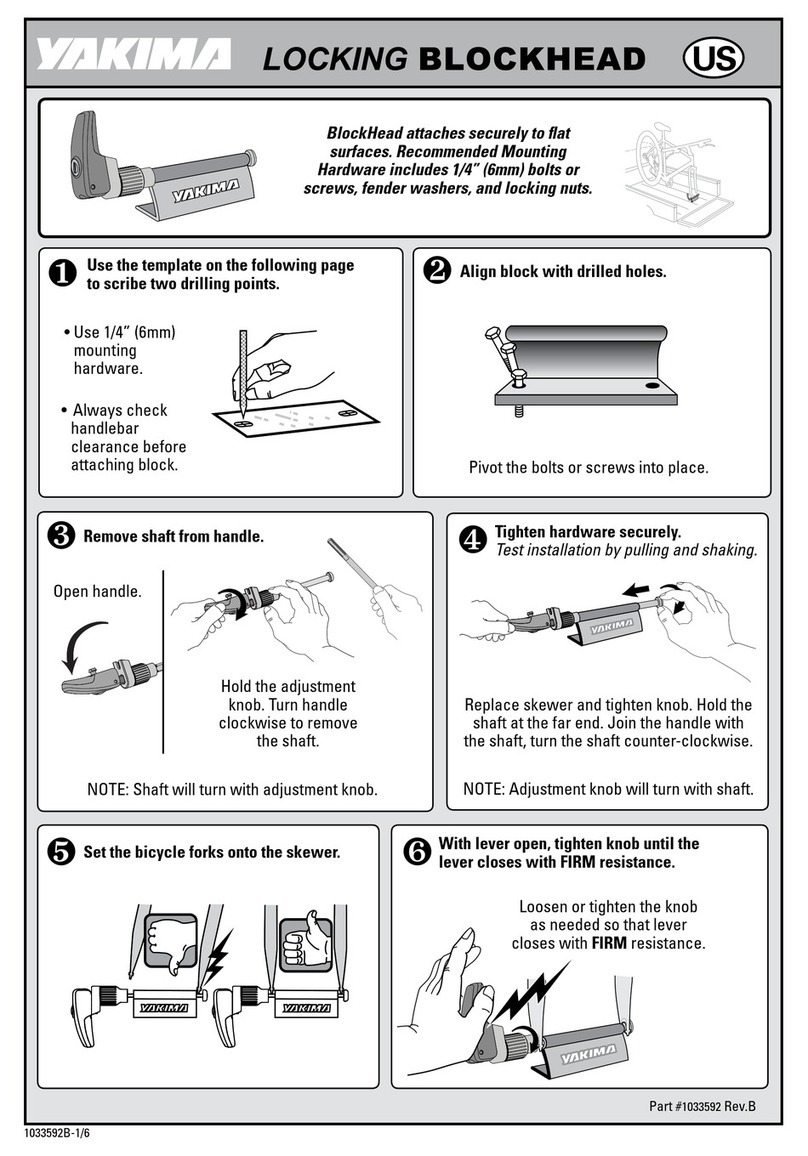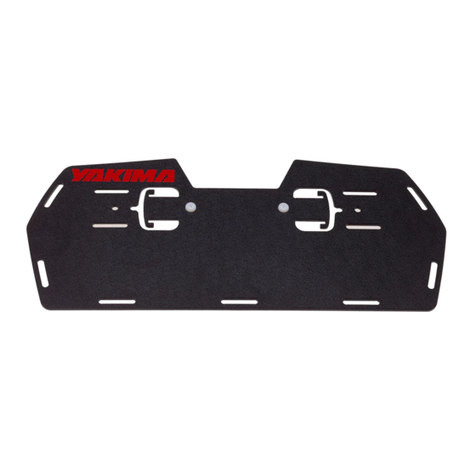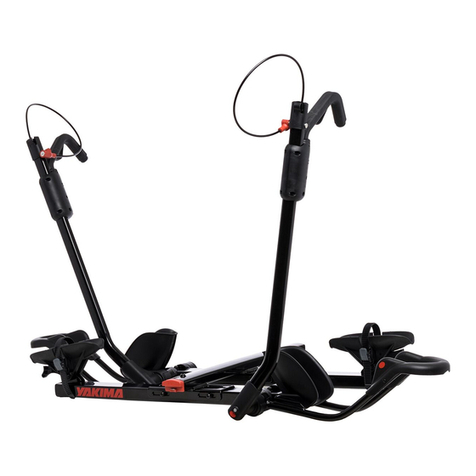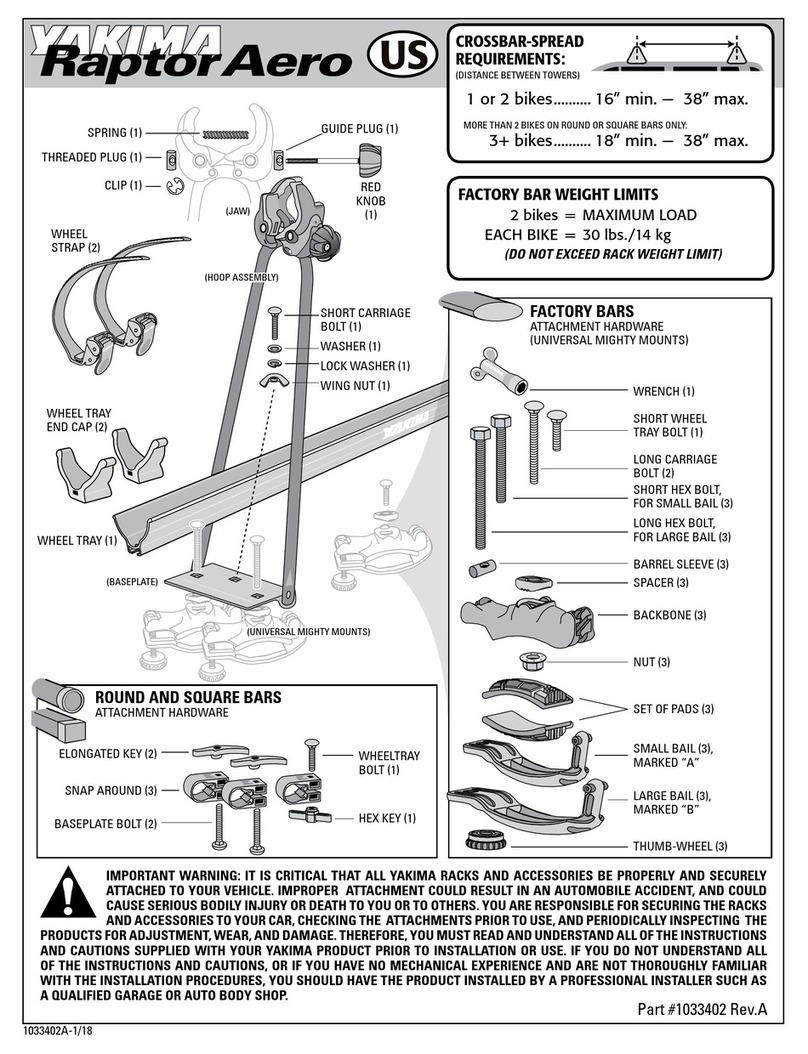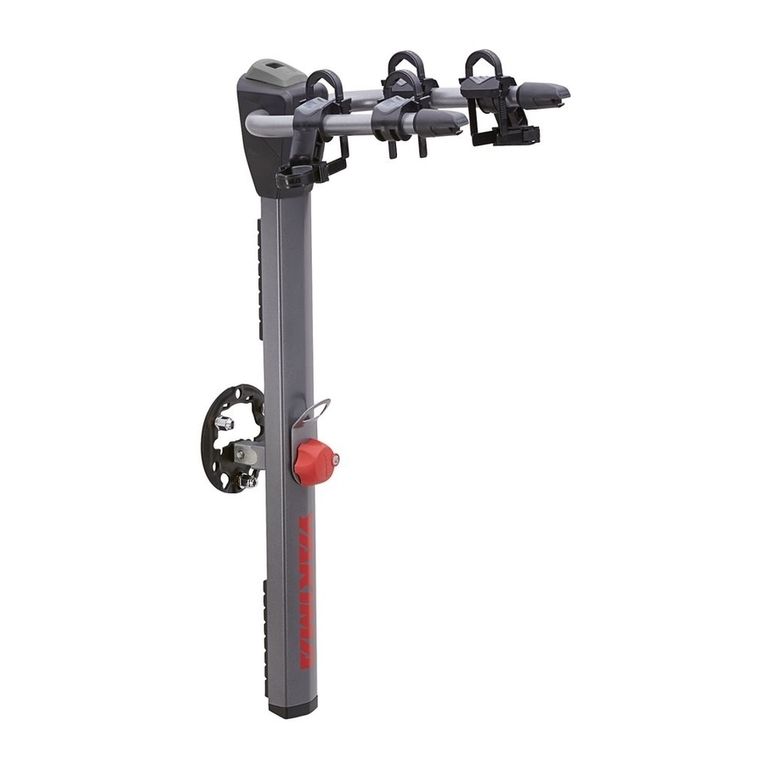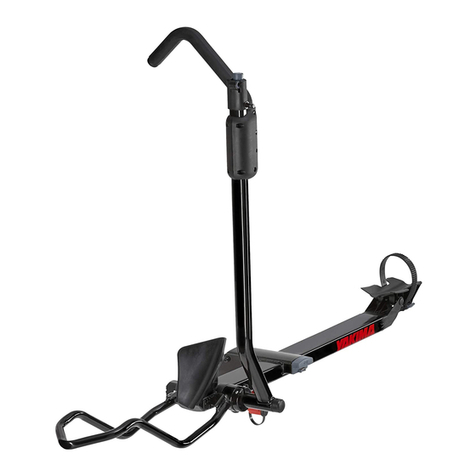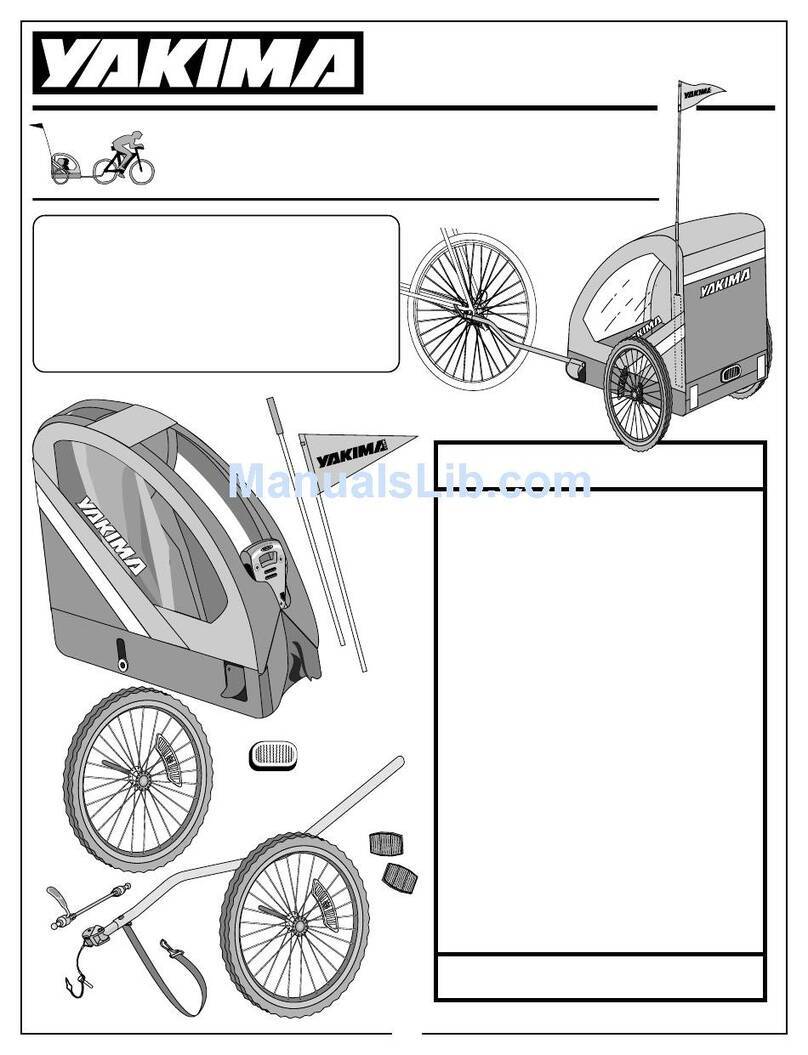
8
1033239B-8/30
BEFORE EACH RIDE:
✔ Check your bicycle’s brakes to be sure they are
operating and safe.
✔ Check the tires on your bicycle and BigTow to be
sure they are properly inflated. The proper
inflation pressure is molded into the sidewall of
the tire. Do not use the BigTow with under-
inflated tires! Under-inflated tires will make the
bicycle less controllable and may cause
accidents and possible injury or death.
✔ Check the tightness of the quick release skewer
for the bicycle’s rear wheel.
✔ Check the hitch to make sure that the trailer is
properly attached.
✔ Respect the maximum load of 70 lbs. (32kg).
✔ Secure the load. Shifting cargo can destabilize
your bike and cause an accident. If you are using
the TowBag, use the straps to secure the bag.
Review the instructions for more info.
✔ Attach the safety flag.
✔ Always wear your helmet.
Ride Checklist & Monthly Maintenance
Obey All Traffic Laws
ONCE EVERY MONTH:
•Inspect tires. Cracked or worn tires can fail without
warning and cause accidents.
•Inspect wheel for trueness and spoke tension.
•Inspect wheel bearings for wear or excessive play.
•Check pivot tube for free play or binding. Spray the
pivot bearings with WD-40™, Tri-flow®or other
lubricant.
•The TowBag can be cleaned with dishwashing soap
and warm water. Do not use bleach products.
If you are uncomfortable completing any of
these steps, take your BigTow to your local
Yakima dealer for service.
The BigTow is so cool that you may hear this more
often than you want to. If you get tired of the
hounding and decide to let a friend borrow your
BigTow, first be sure that it’s in good working order.
Then, explain to your friend how to operate the trailer.
Better yet, show him/her this manual and have him/
her read it. After all, you want your BigTow (and your
friend) to come back in one piece, don’t you?
Bicycles are vehicles and are required to
follow all the rules of the road. This includes
stopping at stop signs and signals and
riding with traffic, not against it. Always ride
defensively; scan ahead for turning cars
and other dangers. Leave the “Alice in
Chains”or “Tom Jones Live”CD and
headphones at home; you’ll need to hear what’s
going on around you. Remember that if you ride
responsibly, you have a better chance of being
treated as a legitimate road user. And as you
ride the bike paths of life, be sure to give an
audible warning when you pass others. It’s not
only courteous, it’s just good karma.
If You Lend Your Bigtow—Lend This Book With It!
Always ride with the safety flag to notify drivers and
other road users that you are
more than just a bicycle. Your
BigTow is also equipped with
a rear reflector and wheel
reflector, and the TowBag has
reflective trim. But, if you are riding in the dark, these
Be Visible On The Road!
are NOT meant to take the place of proper lights.
Always use a bright headlight and a flashing rear
light attached either to the bike or your person to get
yourself noticed by all those pesky cars. Promptly
replace any cracked or broken reflectors. Check
with your local authorities if you have any questions
about what’s legal for night riding in your town.






